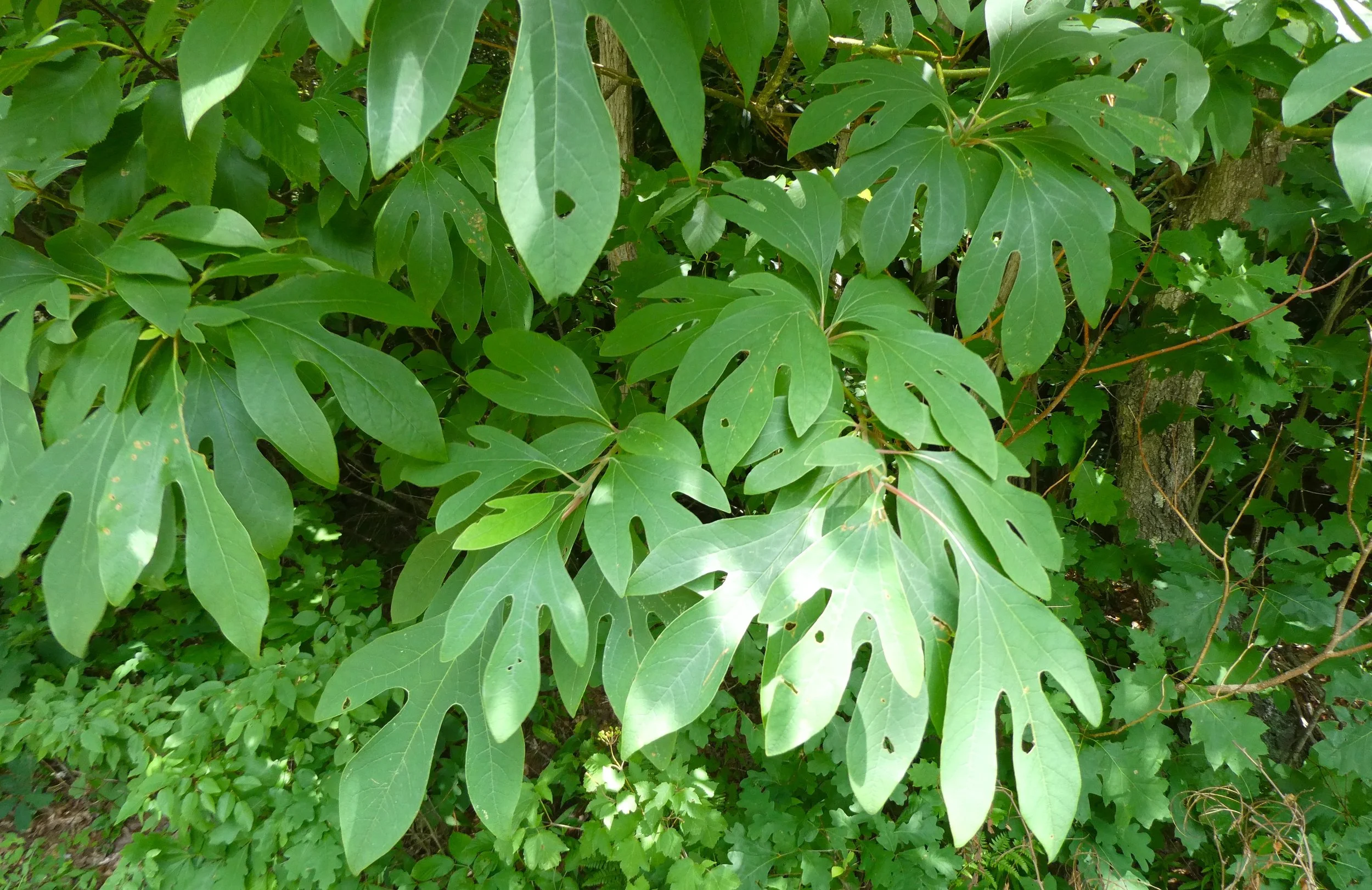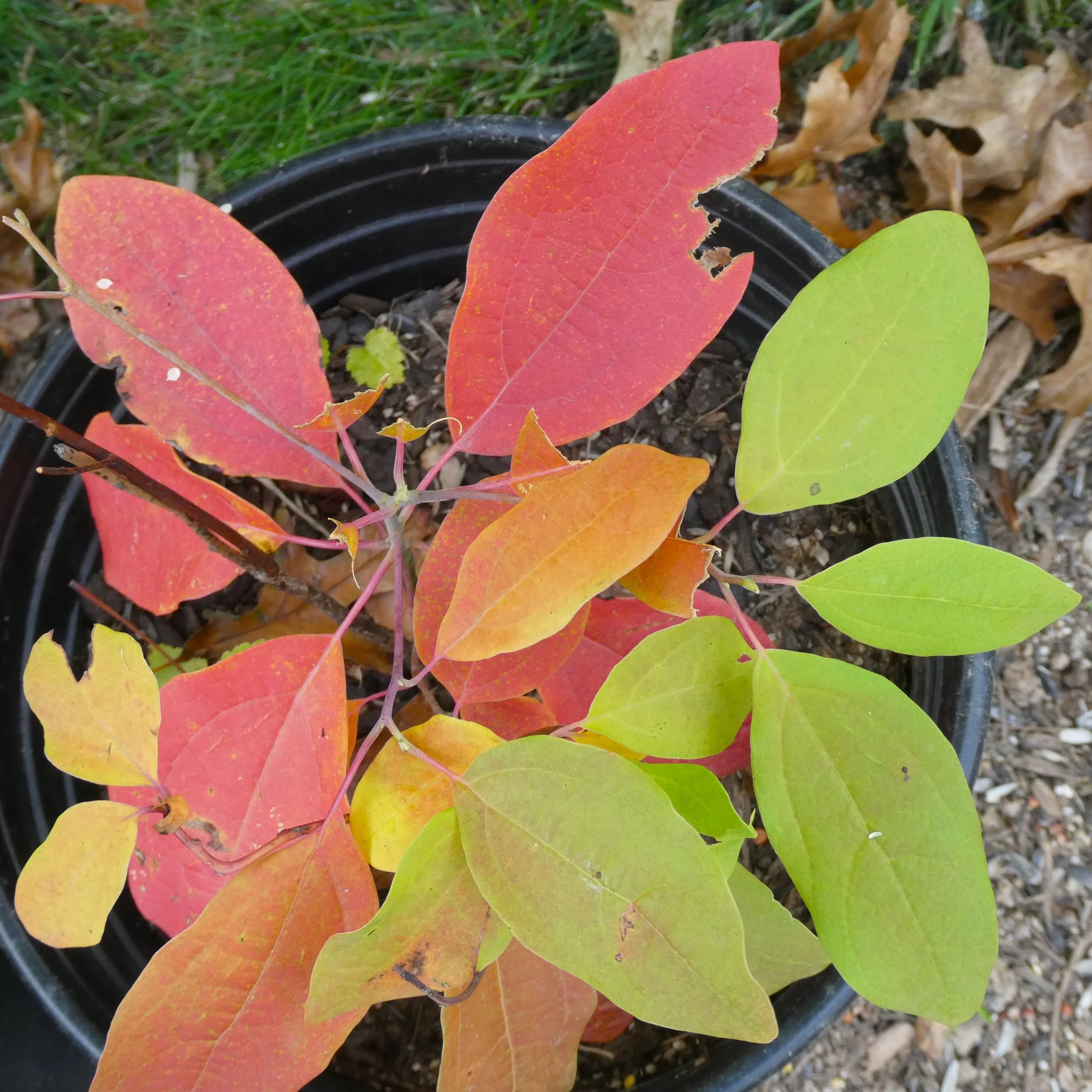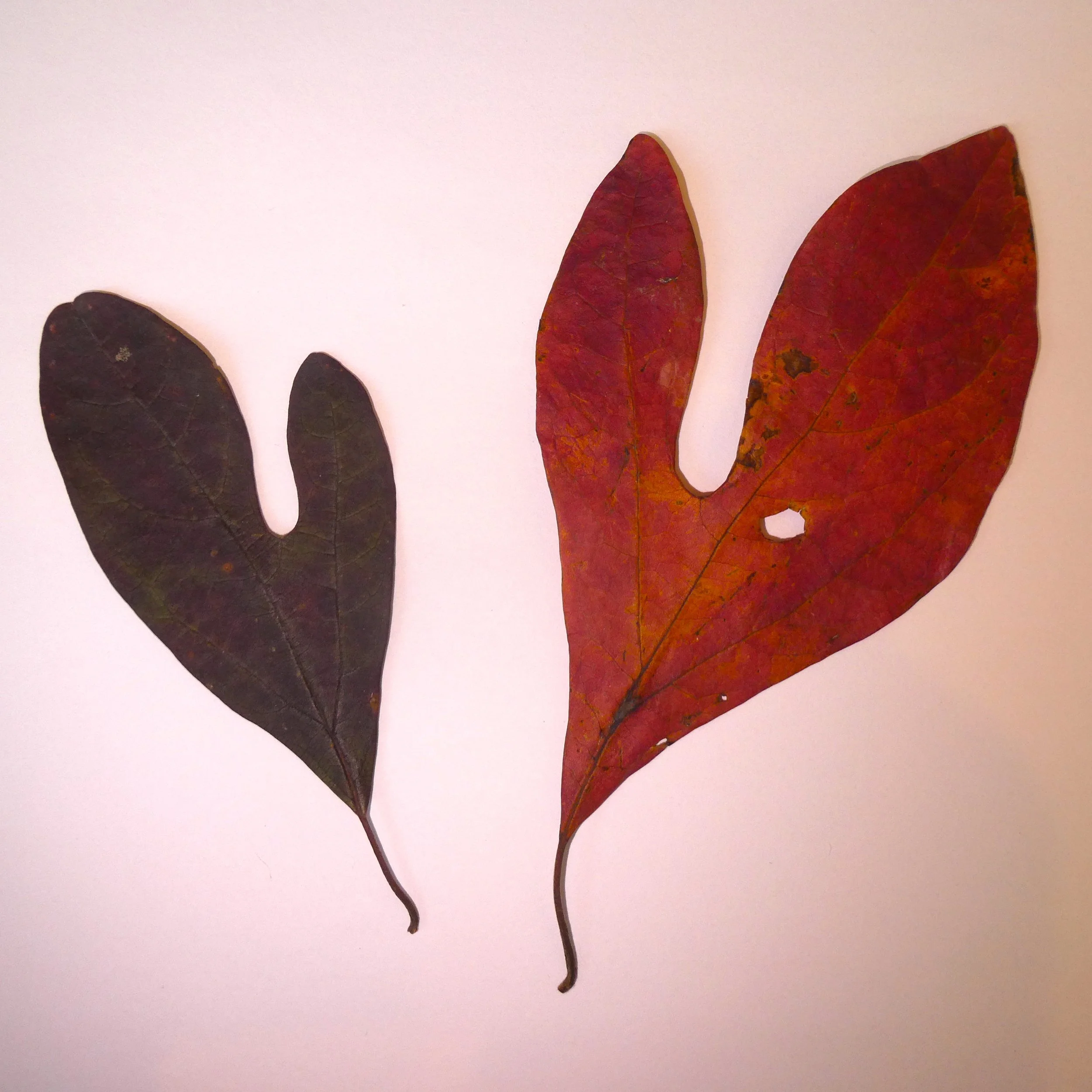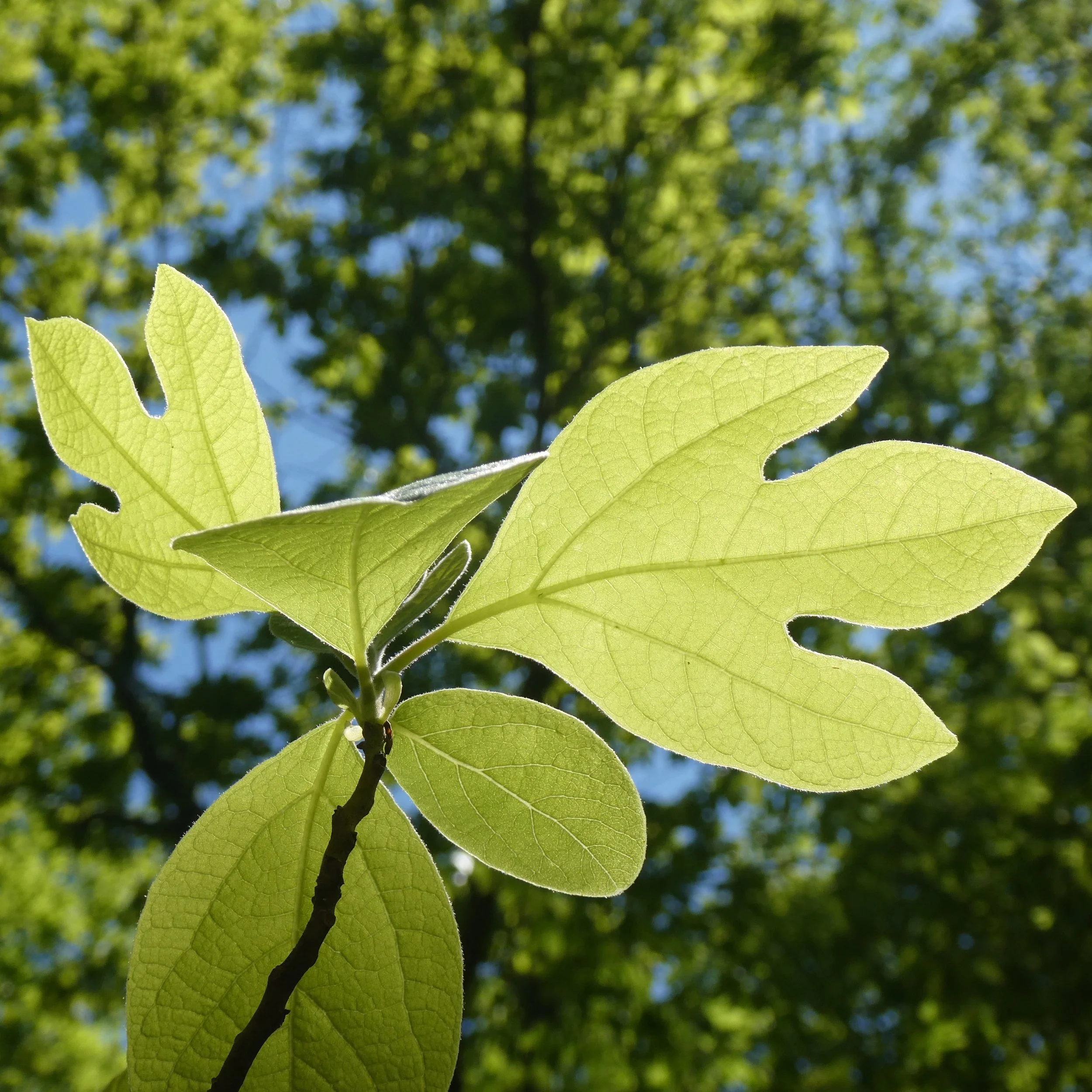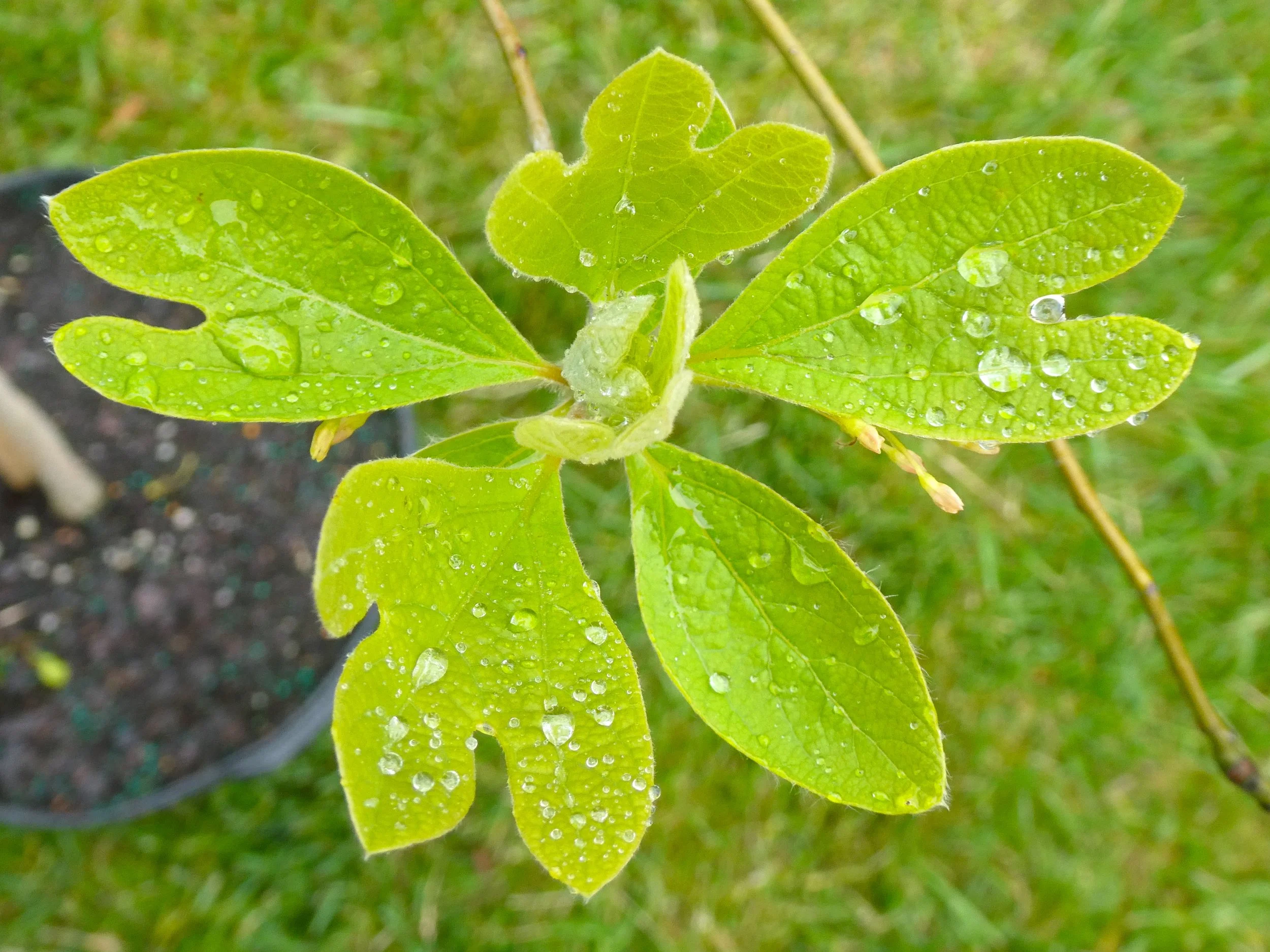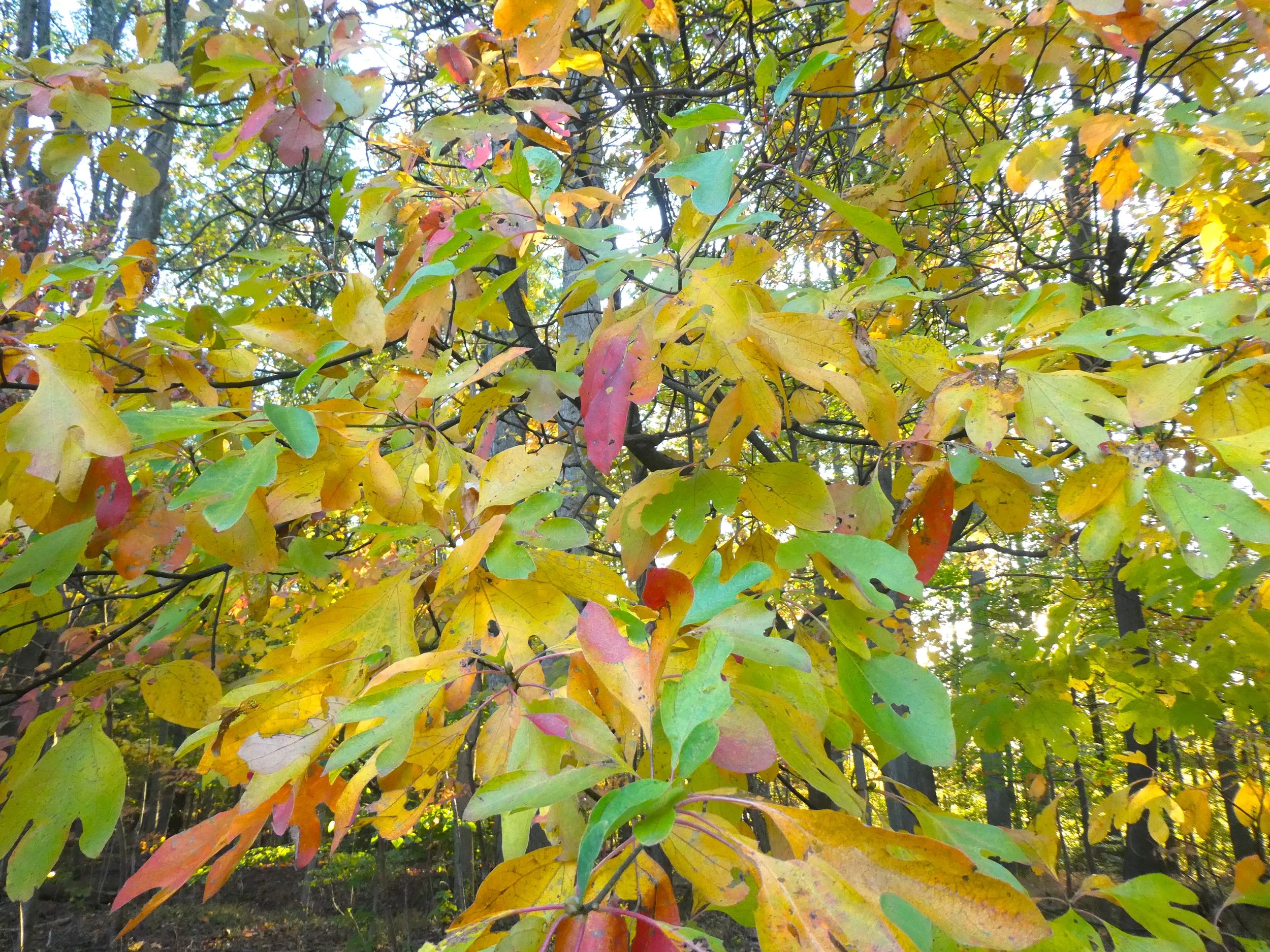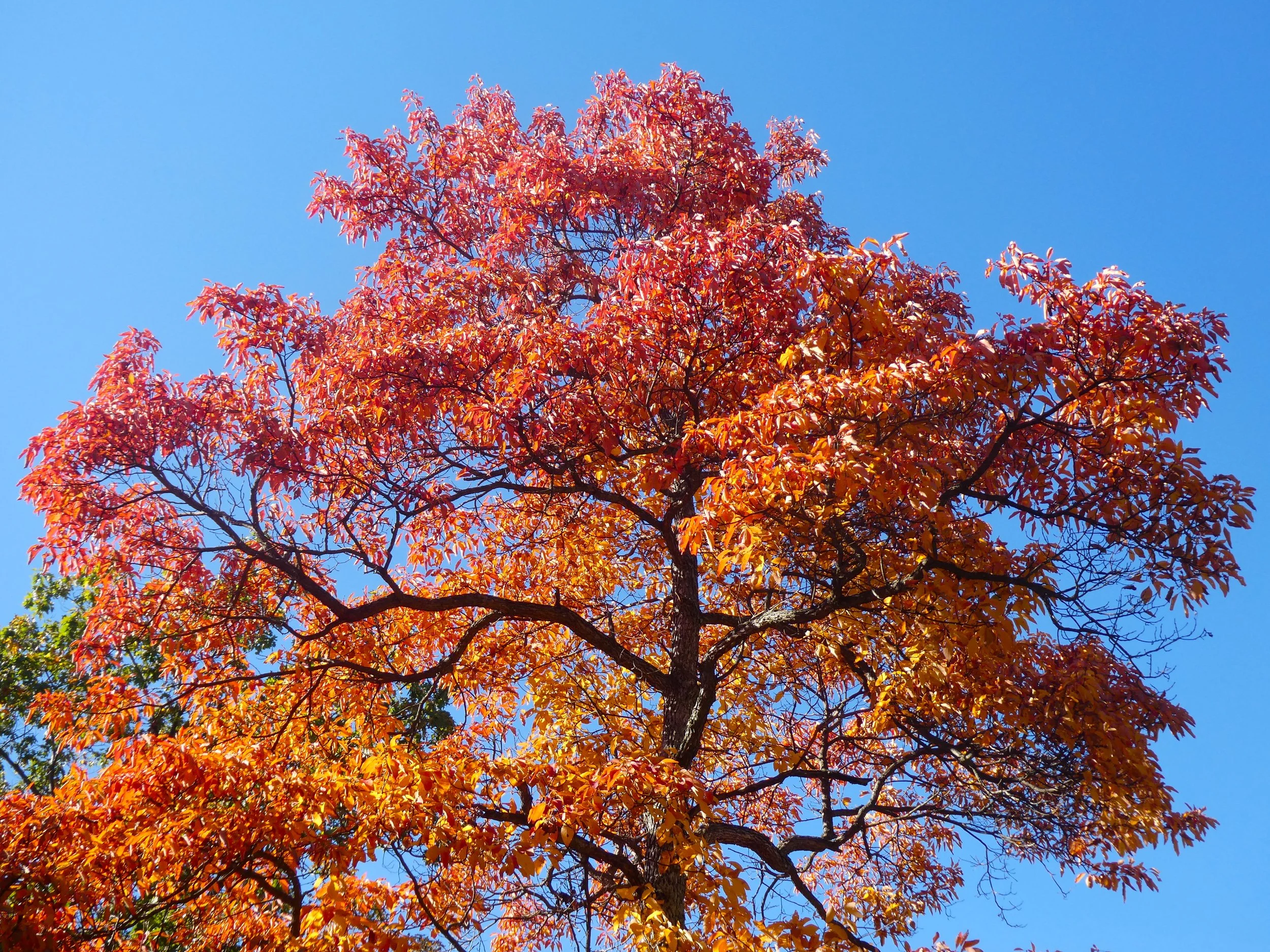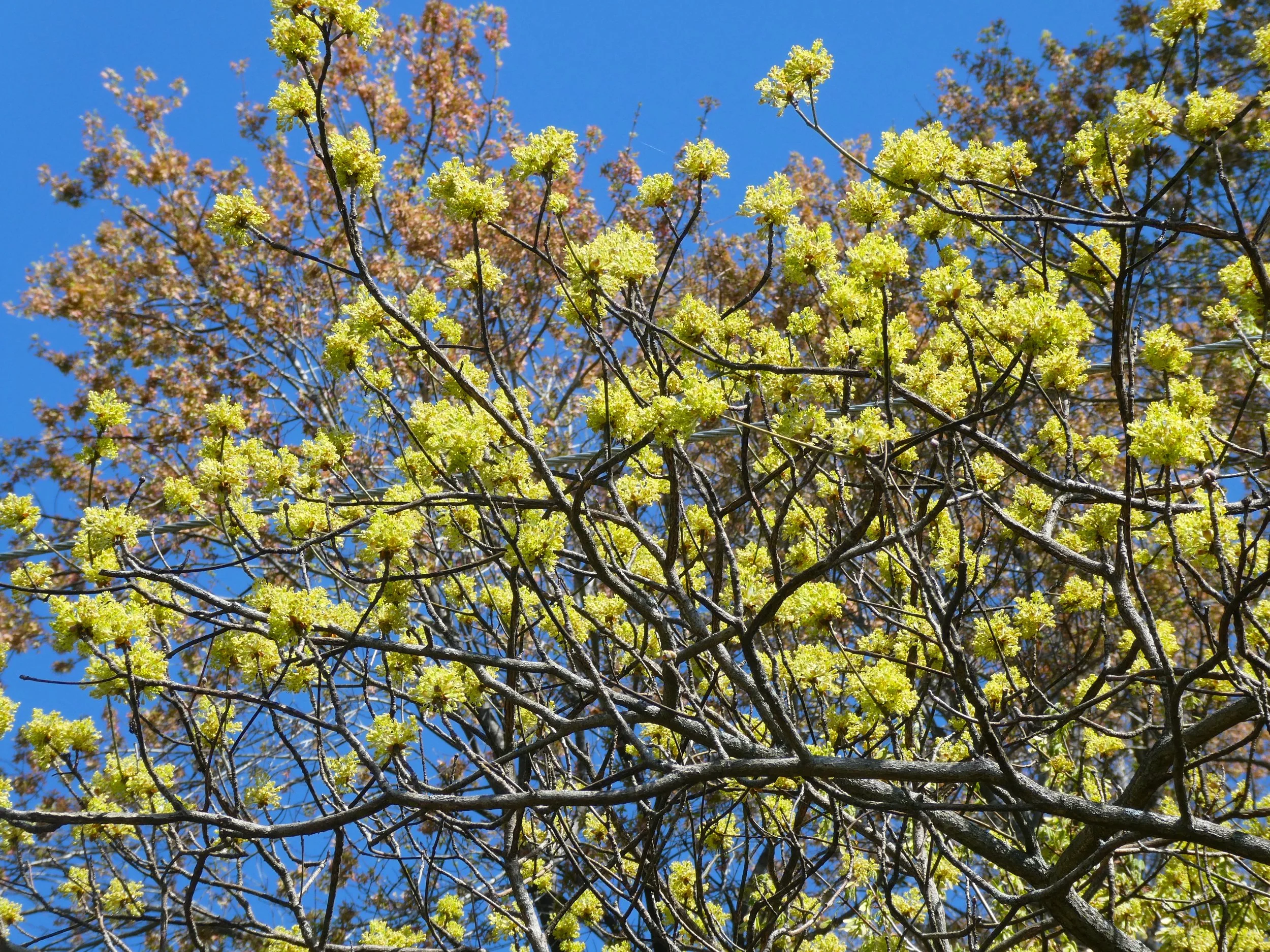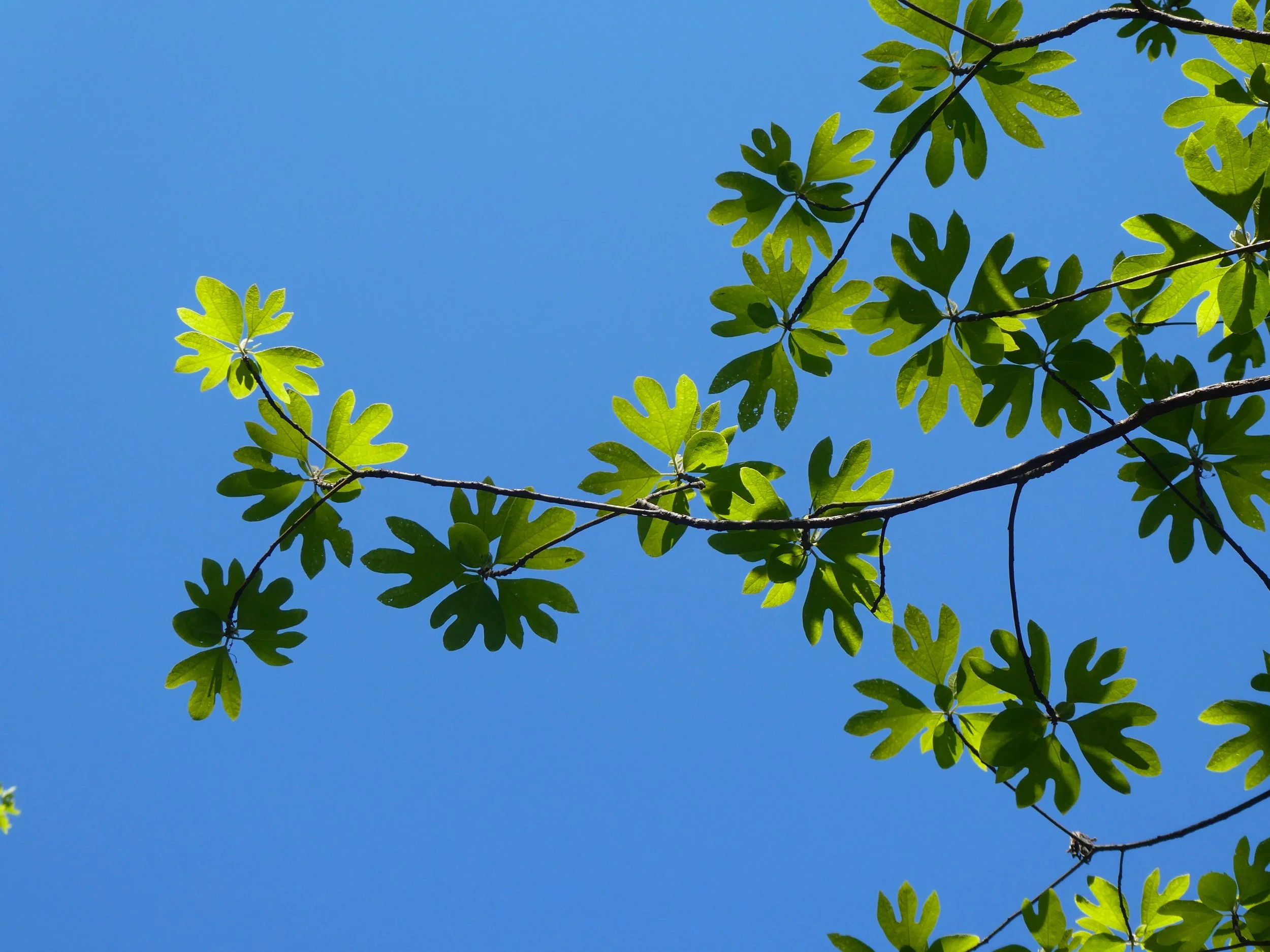Plant of the Week 11: Sassafras (Sassafras albidum)
Sassafras is a unique tree with many interesting features, from the bark to leaves to berries. A member of the Lauraceae (Laurel) family, it also has aromatic properties and was traditionally used culinarily. Its roots were used for root beer flavoring, leaves for tea, and stems for a gumbo-thickening agent (filé). Recently, the oils in Sassafras have been determined to contain a carcinogenic compound (safrole) so many of its uses have been banned.
Sassafras leaves have three different distinct shapes: Oval (Unlobed), mitten, and trident. All three leaf shapes can appear on the same branch.
It is known for spectacular autumn color, and can be red, orange, yellow, and purple.
Flowers appear in early spring before or with the emerging leaves. They are small but in clusters, so they can appear quite showy.
Trees are dioecious, meaning only female plants will bear fruit. Sassafras fruits are dark blue / black drupes (berries) that are on elongated bright red stalks.
Sassafras has high wildlife value. Flowers are an early pollen and nectar source for a variety of pollinators. The fruits are eaten by many birds and some mammals, while the leaves are eaten by various animals. It is a larval host to 38 species of caterpillars and the trees provide cover and nesting sites for birds and smaller mammals.
In nature, Sassafras is most commonly found in groves along roadsides, in fields, or scattered in woodlands.

